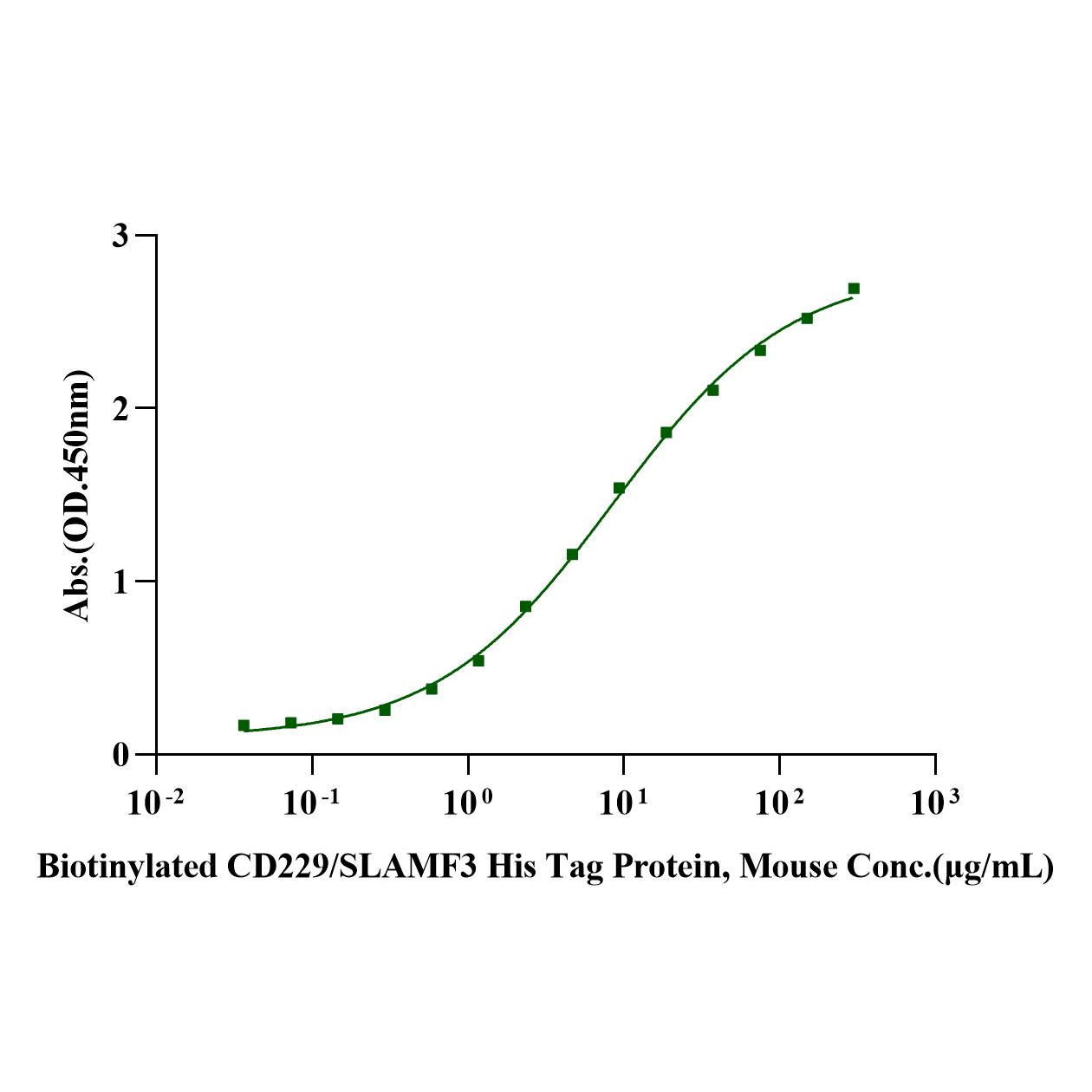2μg (R: reducing condition, N: non-reducing condition).
Product Details
Product Details
Product Specification
| Species | Mouse |
| Synonyms | SLAMF3, Ly9, Ly-9 |
| Accession | Q4VBG4 |
| Amino Acid Sequence | Lys48-Phe454 with His Tag at C-Terminus |
| Expression System | HEK293 |
| Molecular Weight | 70-80kDa (Reducing) |
| Purity | >95% by SDS-PAGE & >90% by SEC-HPLC |
| Conjugation | Unconjugated |
| Tag | His Tag |
| Physical Appearance | Lyophilized Powder |
| Storage Buffer | PBS, PH7.4, 5% trehalose |
| Reconstitution | Reconstitute at 0.1-1 mg/ml according to the size in ultrapure water after rapid centrifugation. |
| Stability & Storage | · 12 months from date of receipt, lyophilized powder stored at -20 to -80℃. · 3 months, -20 to -80℃ under sterile conditions after reconstitution. · 1 week, 2 to 8℃ under sterile conditions after reconstitution. · Please avoid repeated freeze-thaw cycles. |
| Reference | Somuncular E, Su TY, Dumral Ö, Johansson AS, Luc S. Combination of CD49b and CD229 Reveals a Subset of Multipotent Progenitors With Short-Term Activity Within the Hematopoietic Stem Cell Compartment. Stem Cells Transl Med. 2023 Nov 3;12(11):720-726. |
Background
CD229, also known as Ly9 or SLAMF3, is a 120 kDa type I transmembrane glycoprotein belonging to the SLAM subgroup within the CD2 family. This protein is prominently expressed on T and B cells, thymocytes, and to a lesser extent on NK cells. The N-terminal Ig-like domain of CD229 facilitates homophilic binding between CD229 molecules.CD229/SLAMF3 serves as an autoligand receptor within the SLAM family, playing a crucial role in the regulation of immune cell activation and differentiation. It achieves this through homotypic or heterotypic interactions, which are essential for modulating immune responses.
Picture
Picture
SDS-PAGE
SEC-HPLC
The purity of CD229/SLAMF3 His Tag Protein, Mouse is more than 90% determined by SEC-HPLC.
ELISA

Immobilized CD229/SLAMF3 His Tag Protein, Mouse (Cat. No. UA011098) at 2.0μg/mL (100μL/well) can bind Biotinylated CD229/SLAMF3 His Tag Protein, Mouse with EC50 of 7.33-10.18μg/mL.


